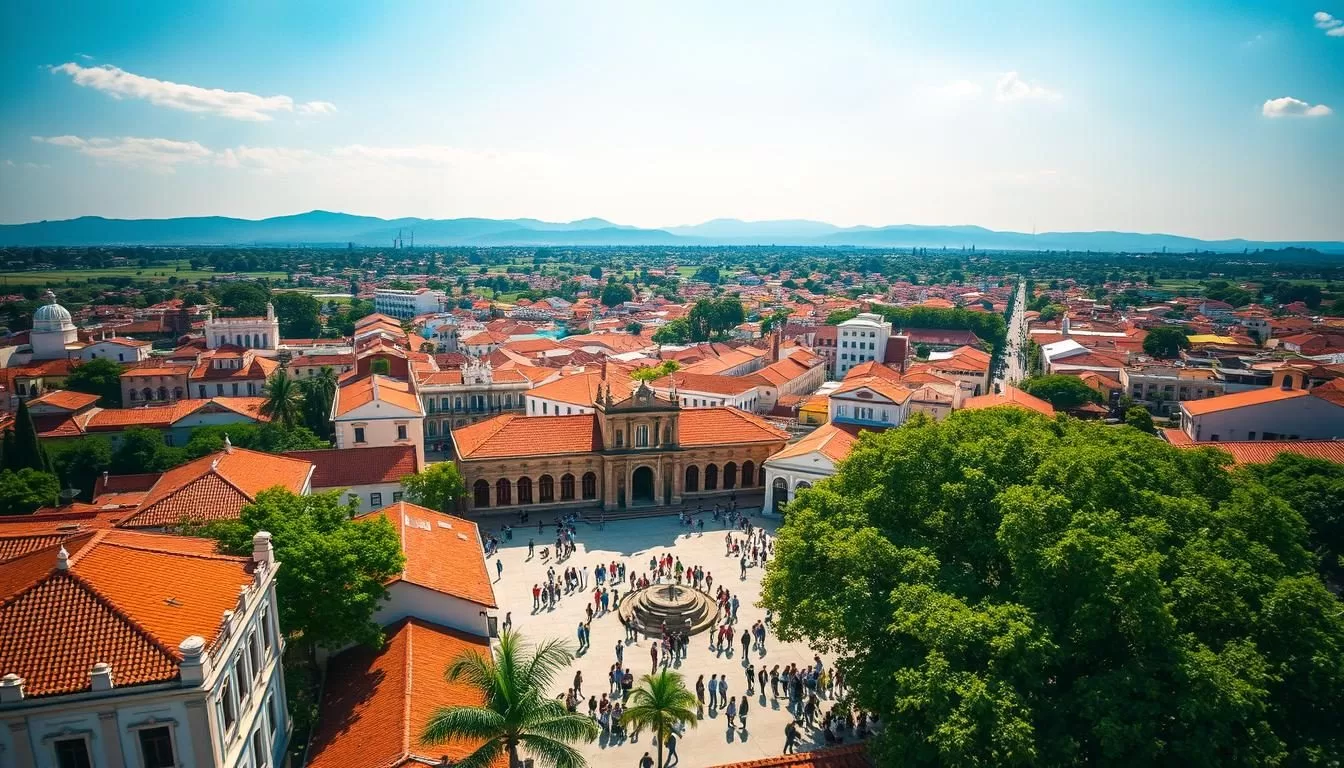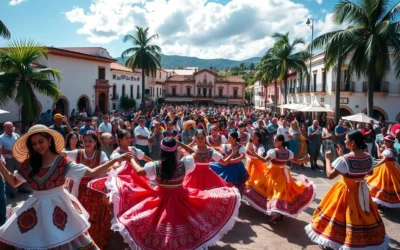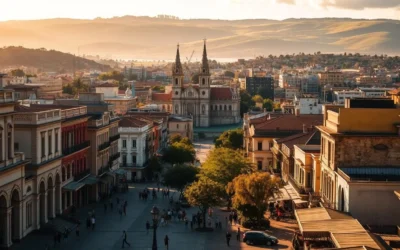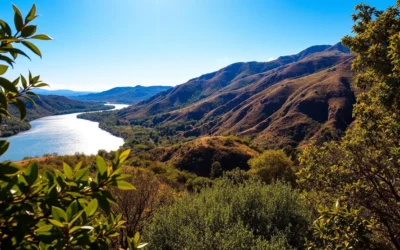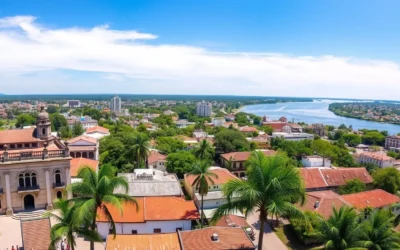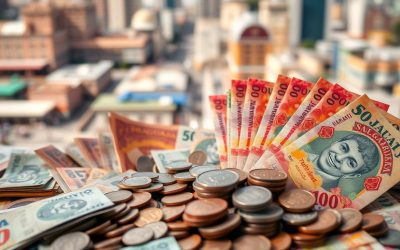✓ Accommodations ✓ Flights ✓ Rental Cars ✓ Tours & Activities
When you think of bilingualism, one country stands out in Latin America. Here, two languages coexist harmoniously, shaping its cultural and national identity. Spanish and Guaraní are not just tools for communication; they are pillars of pride and heritage.
Spanish is understood by nearly 90% of the population, while Guaraní is spoken by over 90%, making it one of the few places where an indigenous language thrives alongside a colonial one. This unique blend reflects the country‘s rich history and deep-rooted traditions.
Understanding this linguistic duality offers insight into how languages unite people. Whether in urban centers or rural areas, the blend of Spanish and Guaraní creates a vibrant cultural tapestry. Dive deeper to discover how these official languages shape everyday life and national pride.
Introduction to Paraguay’s Language Landscape
Language isn’t just about words; it’s about connection and belonging. In this unique place, communication goes beyond simple exchanges. It shapes how people live, interact, and express their identity. Here, language is a living part of daily life, deeply rooted in culture and tradition.
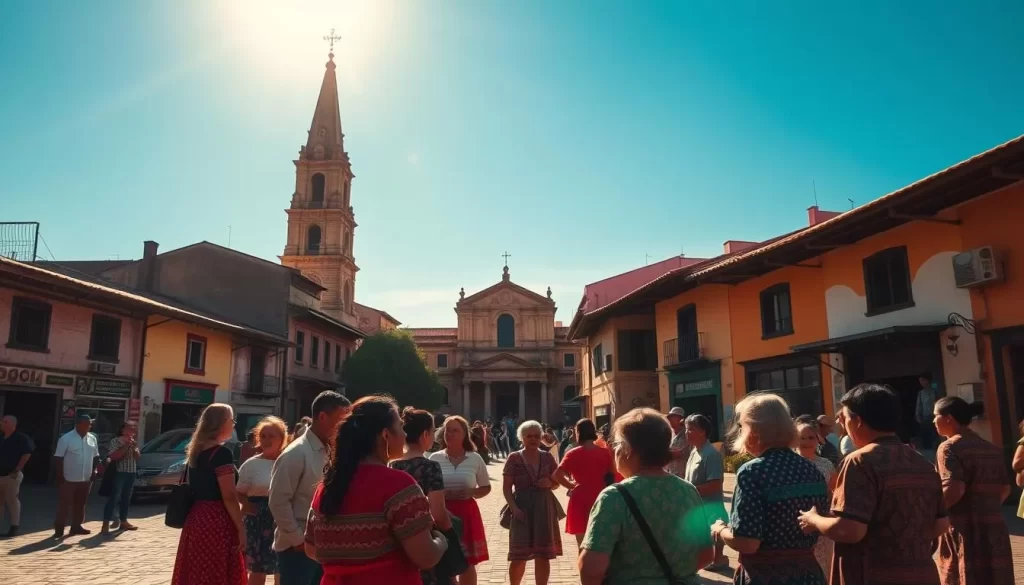
Cultural Importance of Languages
In this vibrant place, language is more than a tool for conversation. It’s a marker of heritage and pride. Guaraní, for example, isn’t just spoken; it’s celebrated in folk art, festivals, and everyday interactions. This indigenous language thrives alongside Spanish, creating a unique blend that defines the culture.
Nearly 90% of the population speaks Guaraní, while Spanish is understood by a similar percentage. This dual linguistic landscape reflects the identity of the people. It’s a testament to their resilience and ability to preserve their roots while embracing modernity.
Why This Matters to You
Understanding this linguistic duality offers a window into how language shapes culture and identity. For you, it’s a chance to see how words can unite people and communities. Whether in urban centers or rural areas, language influences social dynamics and personal connections.
- Discover how language shapes traditions and daily life.
- See why it’s a critical marker of heritage and identity.
- Learn how it fosters unity and self-expression among people.
By exploring this topic, you’ll gain insights into the power of language to connect people and preserve culture. It’s a reminder that every word you speak carries a piece of your story.
Historical Background of Paraguay’s Official Languages
History shapes the way people communicate, and this is especially true in this unique region. The evolution of its linguistic landscape is a story of resilience, adaptation, and cultural pride. Over the centuries, two dominant forces have shaped how people speak: Spanish colonial rule and the enduring spirit of Guaraní.
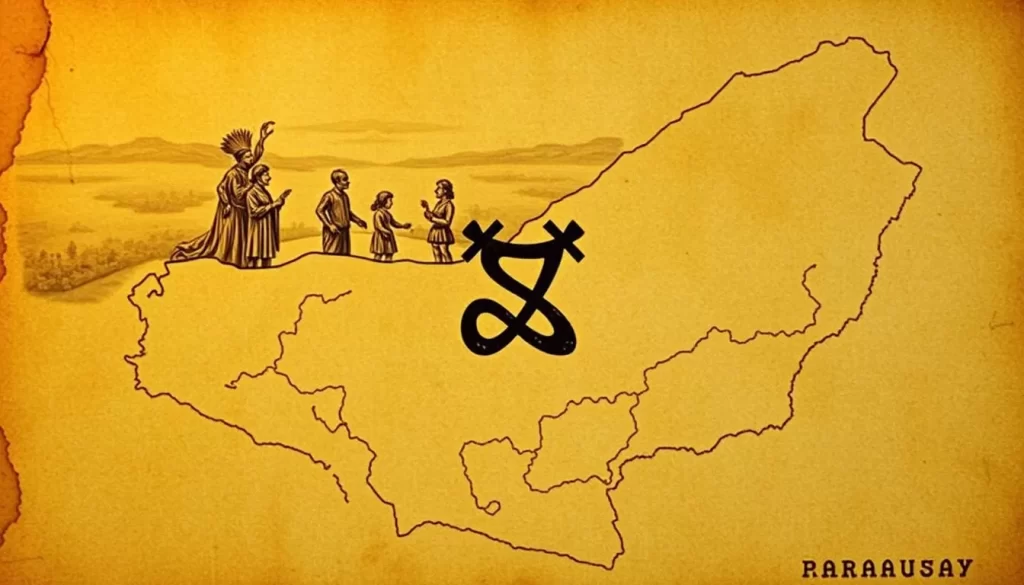
Spanish Colonial Influence
Spanish arrived during the colonial era, bringing significant changes to the region. It became the primary language of administration, education, and trade. For centuries, Spanish rule established a framework that influenced how people communicated.
Despite its dominance, Spanish coexisted with indigenous tongues. This blend created a unique bilingual culture that persists today. The colonial influence laid the groundwork for modern linguistic policies, shaping how people interact daily.
The Emergence of Guaraní as a National Identity
Guaraní, an indigenous language, emerged as a symbol of pride and identity. Over the centuries, it resisted colonial pressures and thrived among the population. Today, it’s a powerful marker of heritage and unity.
Its rise reflects the resilience of the people. Guaraní is not just a means of communication; it’s a testament to cultural survival. Its adoption as a national language highlights its importance in shaping the region’s identity.
- Spanish colonial rule established the initial linguistic framework.
- Guaraní became a symbol of indigenous pride over centuries.
- Historical shifts in population influenced bilingualism.
- Modern policies reflect the influence of both languages.
Understanding this history offers insight into how language shapes culture and identity. It’s a reminder that every word carries a piece of the past.
Paraguay: Official and widely spoken languages
Understanding the numbers behind language use reveals fascinating insights. In this region, nearly 90% of the population speaks Guaraní, while 87% are fluent in Spanish. This dual-language system creates a unique dynamic, especially when comparing urban centers to rural areas.

In cities, bilingualism is common, with most people switching between Spanish and Guaraní effortlessly. However, in rural areas, monolingual Guaraní speakers make up about 50% of the population. This highlights the cultural divide between urban and rural communities.
Data also shows that over 50,000 people speak another native tongue fluently. This diversity adds depth to the linguistic landscape. Whether you’re part of a team studying demographics or simply curious, these numbers paint a vivid picture of how language shapes society.
Guaraní’s prevalence contributes to a distinct social identity. It’s celebrated in traditions, folklore, and even cuisine. For many, being a guaraní speaker is a source of pride and connection to their heritage.
By examining these trends, you gain a clearer understanding of how language policies impact daily life. It’s a reminder that every speaker plays a role in preserving cultural identity.
The Role of Guaraní Language in Paraguayan Culture
Guaraní is more than a language; it’s a living symbol of cultural pride. It represents the indigenous heritage that remains central to the nation’s identity. Its usage is deeply tied to traditions, art, and daily life, making it a vital cultural marker.
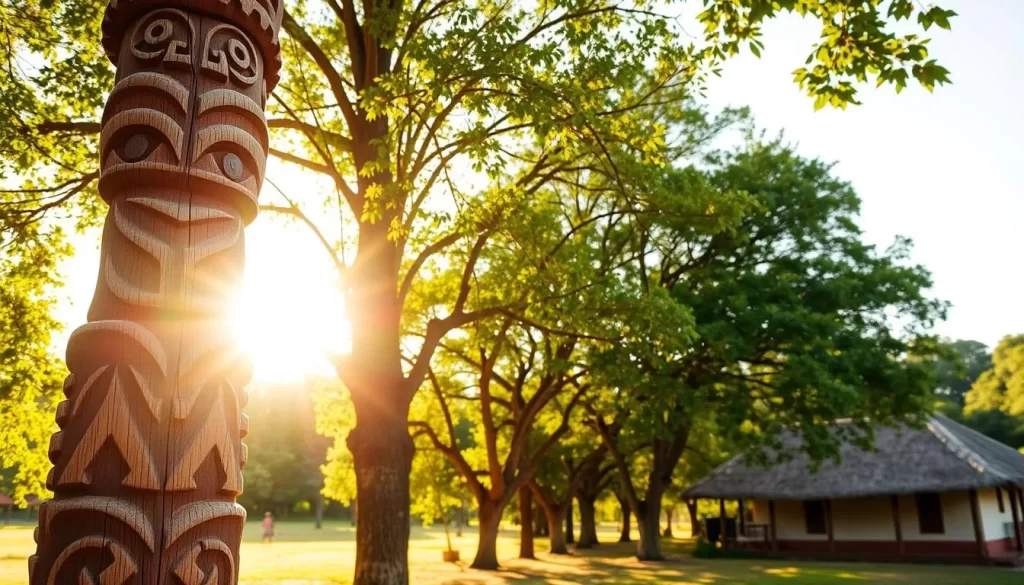
Symbol of National Identity
Guaraní acts as the heartbeat of cultural identity. Over 80% of the population speaks it, making it a unifying force. It’s celebrated in folk art, music, and festivals, showcasing its enduring influence.
The guaraní language also reflects cultural syncretism. Its melding with Spanish, known as guaraní spanish, highlights the blending of indigenous and colonial influences. This unique mix is a testament to resilience and adaptability.
- Discover how Guaraní shapes traditions and daily customs.
- Understand its role as a national symbol of pride.
- See its influence in art, folklore, and modern expressions.
Guaraní’s historical roots run deep. Recognized as an official language in 1992, it continues to assert its importance in modern times. Its preservation is a reminder of the power of language to connect people to their heritage.
| Aspect | Impact |
|---|---|
| Cultural Identity | Guaraní serves as a symbol of national pride and unity. |
| Art and Folklore | It influences traditional music, dance, and storytelling. |
| Daily Life | Used in everyday conversations, it bridges generations. |
| Historical Significance | Its recognition in 1992 solidified its role in modern society. |
By exploring the guaraní language, you gain insight into how it shapes identity and culture. It’s a powerful reminder that language is more than words—it’s a bridge to the past and a guide to the future.
Spanish in Paraguay: Usage and Influence
Spanish plays a pivotal role in shaping communication across various sectors. Introduced during colonial times, it remains a dominant force in government, business, and education. Over 90% of the population speaks or understands it, making it essential for formal interactions.
In urban areas, Spanish is the primary language for commerce and administration. It’s widely used in legal documents, official meetings, and academic settings. This contrasts with rural regions, where Guaraní often takes precedence in daily life.
Spanish’s influence extends to cultural and economic interactions. Its unique features, like the retention of the /ʎ/ sound, reflect the blending of colonial and indigenous traditions. For more on the linguistic features of Paraguayan Spanish, explore this resource.
- Spanish dominates in government and business sectors.
- It’s fundamental for administrative and educational purposes.
- Its usage contrasts with the cultural preference for Guaraní.
Understanding this balance offers insight into how colonial influence coexists with indigenous heritage. Spanish remains a key force in shaping modern communication, while Guaraní preserves cultural identity.
Diversity of Indigenous and Minority Languages in Paraguay
Beyond the dominant tongues, a tapestry of indigenous dialects weaves through the cultural fabric. These languages are not just means of communication but vital threads in the nation’s identity. Each dialect carries stories, traditions, and a deep connection to the land.
Overview of Indigenous Dialects
South America is home to approximately 560 languages, with some estimates suggesting over 2,000 existed before colonization. In this region, smaller groups speak unique dialects, each reflecting their heritage. For example, Quechua, spoken by 6 to 8 million people, is the most widely used indigenous language in the Andean region.
Other dialects, like Aymara and Nahuatl, also hold significant cultural value. Aymara is spoken by nearly 2.5 million people in Peru and Bolivia, while Nahuatl has around 1.5 million speakers. These languages are more than words; they are living expressions of history and identity.
Regional Variations and Their Cultural Roots
Regional differences shape how these languages are spoken and preserved. In some areas, dialects are tied to specific traditions, such as music, art, or rituals. For instance, the Yagan language, now critically endangered, was once celebrated for its unique vocabulary.
These variations highlight the rich cultural mosaic of the region. They also underscore the importance of preserving these languages as part of national heritage. Many indigenous persons and guaraní persons actively work to keep their dialects alive, ensuring they remain a source of pride for future generations.
- Discover the myriad of indigenous languages spoken across the region.
- Understand how dialects reflect unique cultural roots and traditions.
- Explore how regional variations tie into local heritage and identity.
By learning about these languages, you gain insight into the rich cultural diversity that defines this nation. For more on the challenges faced by indigenous groups, explore this resource.
Foreign Languages and Global Influences
The blending of foreign and native tongues creates a unique linguistic tapestry. In this region, European languages like Portuguese, Italian, and German have made significant inroads. These influences highlight the openness to global interactions while staying rooted in local traditions.
The Role of European Languages
European languages have shaped communication in various ways. For instance, Portuguese is widely spoken near the Brazilian border, while Italian and German are prominent in immigrant communities. These languages coexist with native dialects, creating a vibrant multilingual environment.
Despite these global influences, the language paraguay remains deeply tied to its heritage. Many persons continue to prioritize native tongues like Guaraní, even as they adopt foreign languages for trade and education. This balance reflects a commitment to preserving cultural identity.
- European languages enrich the linguistic landscape.
- Native traditions remain central to daily communication.
- Multilingual groups foster cultural exchange and unity.
Understanding this dynamic offers insight into how global and local influences shape identity. For more on the survival of indigenous languages, explore this resource.
Impact of Government Policies on Language and Education
Government policies play a crucial role in shaping how languages are taught and preserved. In this unique region, legislation has been a driving force in maintaining bilingual education and cultural identity. The 1992 constitution solidified the role of both Spanish and Guaraní in schools and public offices, ensuring their integration into daily life.
Language in Schools and Legislation
Educational reforms have been instrumental in promoting bilingualism. The law mandates that all public institutions use both official languages in their operations. This ensures that students receive formal education in their mother tongue, fostering a deeper connection to their heritage.
Schools have implemented bilingual programs to support this vision. For example, the government has introduced initiatives to train teachers in both languages, ensuring they can effectively deliver the curriculum. These efforts reflect the power of informed policies in shaping the future of education.
- Legislation ensures the use of both languages in public offices and schools.
- Reforms support the teaching of Guaraní alongside Spanish.
- Political will drives the preservation of cultural identity.
National priorities have also played a role. The country has made significant strides in promoting Guaraní in supranational organizations, further solidifying its importance. These policies highlight the commitment to cultural preservation and societal progress.
| Aspect | Impact |
|---|---|
| Bilingual Education | Ensures students learn in their mother tongue, fostering cultural pride. |
| Legislation | Mandates the use of both languages in public institutions. |
| Teacher Training | Prepares educators to deliver bilingual programs effectively. |
| Cultural Preservation | Supports the use of indigenous languages in education and media. |
For more insights into how these policies have evolved, explore this resource. Understanding the impact of government policies offers a glimpse into how language shapes identity and progress.
Conclusion
In South America, the blend of Spanish Guaraní creates a unique cultural identity. This dual-language system is not just about communication; it’s a reflection of history and pride. Over 90% of the population speaks Guaraní, while Spanish remains essential for formal settings.
Understanding this linguistic duality offers insight into how language shapes society. It’s a reminder of the resilience and adaptability of people. Whether in urban centers or rural areas, this blend fosters unity and cultural preservation.
This article highlights the importance of bilingualism in shaping identity. It’s a testament to how tradition and modernity coexist. For you, it’s a chance to appreciate the richness of South American culture and its global relevance.
Explore more about this fascinating topic through resources like Paraguay’s history and cultural dynamics. Dive deeper to understand how language continues to shape societies worldwide.
The above is subject to change.
Check back often to TRAVEL.COM for the latest travel tips and deals.
Here are some Tours & Sightseeing suggestions that might pique your interests!
